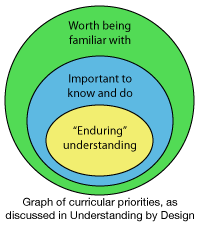“Towards a Balanced Diet of Reading” is going to always be pertinent
in my field of teaching as a future English teacher. Where the students find
this balance, and how can I help them reach it? It has always been a question
of mine about to assign for reading and does it always have to be the “classics”
that every one of my high school English teachers covered. I was bored in those
classes where the teacher would assign To
Kill a Mockingbird, and by then I would have read it three times in other
classes. I found that this chapter in the book broke down my questions, and not
only applied the answers to English teachers, but also to other content based
subjects.
One section
that stood out to me is called “A Balance of What?”. It made me stop and wonder
about how a balance of reading can be achieved. Many classes only use
textbooks, and research is saying that those classes need to add more “real
life” reading. The eight sub-sections about this topic broke down the question
of how you create the balance and what kind of texts you can use. I found the
Fiction vs. Nonfiction part to be pertinent to a wide range of subjects. A suggestion
was a science classes adding in fiction and nonfiction novels to have students become
more engaged in the material they are learning. The teachers can use the
nonfiction books to give background or learn about how something was developed,
like the chapters suggestion of learning about the creation of the atomic bomb,
or use fiction books and use a science fiction novel to introduce to concepts
of time, space, and astronomy. This chapter did a good job in breaking down
what a balance looks like and how teachers in all subjects can use the concept
of balanced reading in their classes.
My favorite
part of the chapter is about the Classroom Library. From personal experience, I
always enjoyed going through the books that the teacher had in the classroom
that the students were allowed to borrow. It always gave me good ideas for
future books to read or exposed me to books that I had never heard of before. I
knew, even before reading this chapter, I wanted to have a classroom library in
my future classroom. Even this past year when I was doing observations at a high
school, I found myself going through the books that the teacher kept on the
shelves in her classroom. I find it to be a way for the teacher to foster
reading within their students. One part that I didn’t think about was adding
newspapers, magazines, and web articles into the library. Maybe some students
don’t have access to these forums of literature and the classroom library would
be a good resource to have students branch out and read other things instead of only assigned books. The most highlighted part of this section came from the
box titled “Key Ingredients of a Classroom Library”. I found all of the points
to be incredibly true. I started looking into some of the general interest
magazines online and spent hours reading articles on http://www.time.com/time/ . Implementing
the use of magazines and articles would really benefit a classroom library by
finding a wider range of materials for a wider range of student interests.









